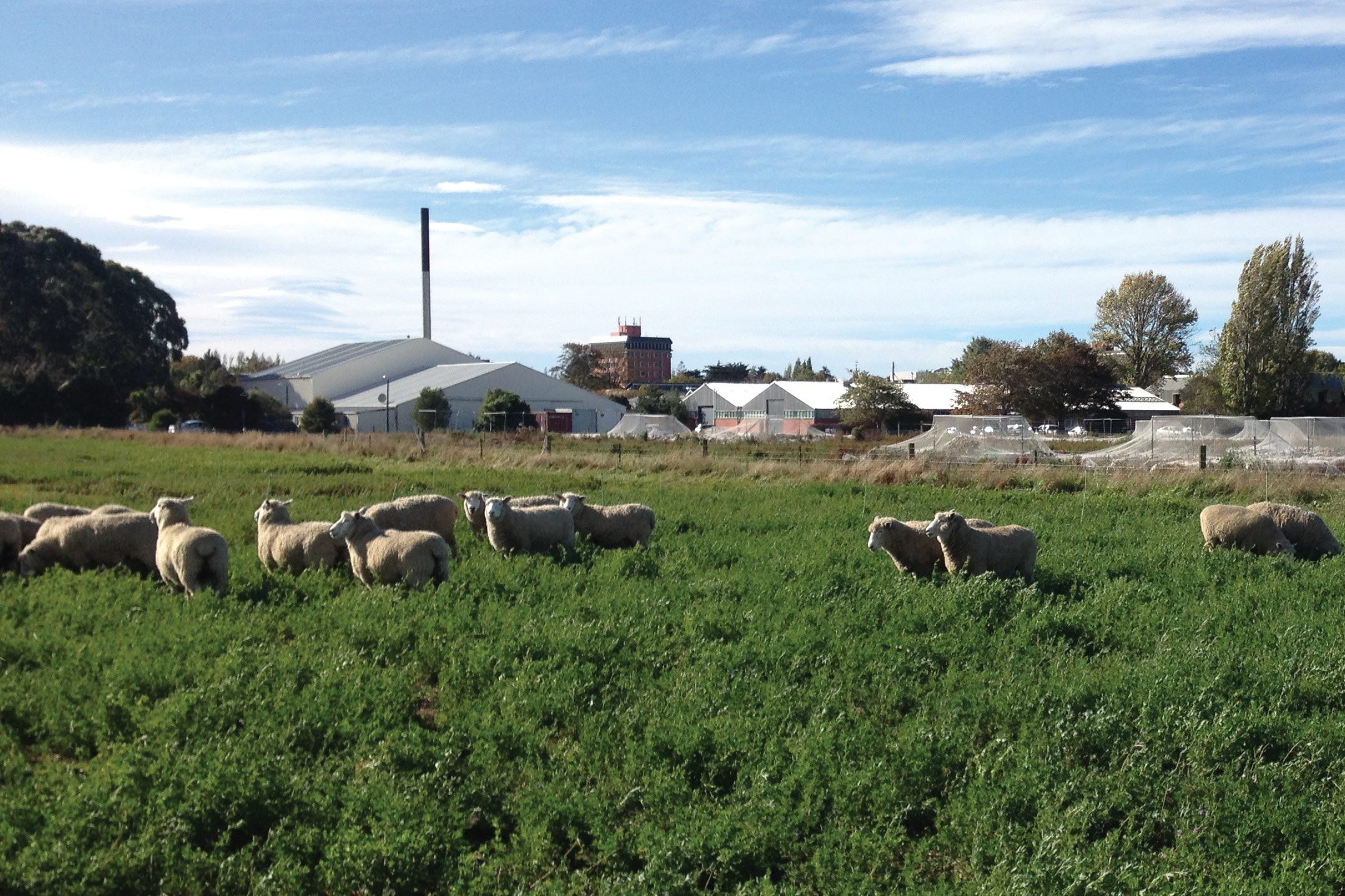Which lamb produces more meat: one that is resistant or one that is resilient to gastro-intestinal worms?
It turns out that there’s very little difference, according to the latest Lincoln University research.
“The results indicate that selection for resistance or resilience will eventually result in a similar level of performance although resilient animals did have a growth advantage until six months of age,” lead researcher and animal production scientist Andy Greer says.
Results from previous parasite challenge growth trials have confirmed the superior liveweight gain (LWG) of ‘resilient’ lambs – those that can tolerate high worm burdens – compared with ‘resistant’ lambs – those that have high immunity to internal parasites.
However, in most of these trials the resilient and resistant animals were run together so that the increase in pasture larval species and internal parasite infection, and the effect this had on lamb LWG of each group was hard to isolate.
“It was hard to tease out the epidemiological benefits of resilient versus resistant lambs, but we’ve been able to do this by running them separately over a long time.”
In the five-year study which will wrap up in 2022, the lambs from resistant and resilient Romney lines were compared on three farmlets.
On each block they were weaned at 10 weeks and set-stocked in their respective birth paddocks for 210 days. Every month the lambs were weighed, and saliva, fecal egg and pasture pluck samples taken. Lambs were removed from the paddock early April each year and the paddocks rested until required in August for the next lambing. On both Farmlet 1 & 2 the lambs got no anthelmintic treatment. On farmlet 3 resilient and resistant lambs were co-grazed under a ‘suppressive’ anthelmintic drench system. This involved the Bionic capsuling of ewes prior to lambing, a short-acting oral drench of lambs at weaning followed by a Cydectin injection.
Analysis of results showed resilient lambs had a far greater growth response following drench than did resistant lambs up to 210 days. Also, the cumulative LWG of drenched resilient lambs was about one-third greater than un-drenched resilient lambs over the same period. This result highlighted the greater impact and opportunity cost that internal worms had on resilient animals.
“Resilient lambs have greater growth potential, but the tipping point is in autumn which is when they’re starting to develop immunity but are also challenged by a greater parasite burden.”
The study also showed the “temporal effect” of parasite infection – how it changes over a season and how farmers might be able to use this information to feed and manage lambs for optimal growth within a time frame.
Although the results weren’t directly relevant in the ‘here and now’, they could be 20 years down the track when there may be few if any drenching options left.
“It indicates that you can get an epidemiological advantage by selecting for resistant animals, but the trade-off is reduced growth rates.”
There is a possibility that follow-up research might look at breaking the parasitism cycle.
“We know that autumn is when resilient animals are challenged and liveweight gains fall so we’d be interested to see how a combination of strategic grazing by resistant animals and targeted drenching could help break the parasitism cycle in resilient animals.”
PROGRAMME PROVES ITS WORTH
The first crop of lambs from an artificial insemination (AI) programme are on the ground, proving the technology works.
The AI programme was carried out on 90 commercial ewes last autumn using the cervical AI technique, and is part of the Rapid Genetic Gain project on Lanercost, Beef + Lamb New Zealand’s Future Farm.
The project aims to define the effectiveness, speed of change and cost of breeding technologies and determine if sexed semen can be used successfully in sheep. It will also compare cervical to laparoscopic AI using sexed semen.
The project takes into account the practicalities for commercial farmers to execute a cervical AI programme. In this first year, Lanercost’s farm manager Digby Heard learnt how to do this procedure himself with guidance from Xcell Breeding Services.
This technique is commonly used in other sheep farming countries because it is faster, less expensive than the laparoscopic method and does not require skilled technicians.
B+LNZ’s general manager of farming excellence Dan Brier says sheep studs typically use the laparoscopic method because it is associated with higher conception results. Scanning of the AI ewes on Lanercost was 47.4%, which was particularly pleasing given the drought conditions in autumn and that this was the first-time Digby had carried out the procedure.
“What this means is that from one day, we have 43 ewes in lamb to a specific ram. If we chose to, we could repeat that for a week and have 300 in lamb to him.”
Brier says sexed semen wasn’t available this year, so they went ahead with the AI programme using fresh semen collected from the Lanercost ram flock as a proof of concept and as an opportunity to teach Digby how to cervically inseminate ewes.
Rapid genetic gain technologies will be used on the 1310ha hill country farm near Cheviot in North Canterbury to speed the transition to a low methane emitting flock, but Dan says these technologies could be applied to any targeted traits.
“Lanercost will be a good testing ground for artificial breeding technologies such as artificial insemination and will hopefully give commercial farmers the confidence to invest in them if they are wanting to change the genetic profile of their flock,” Dan says.
While the focus on Lanercost is transitioning to a low methane flock, artificial breeding could be used to speed the genetic gain in any number of heritable traits.
“With consumer pressure increasing all the time, farmers need tools to be able to use high merit rams over a bigger proportion of their flock while keeping a lid on costs. For some farmers it might be finer wool but for others it could be health traits like Facial Eczema.”
- Supplied by B+LNZ





